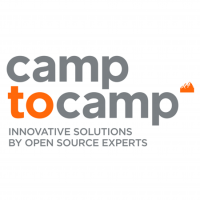Create a new release¶
Vocabulary¶
On this page, we use the word version for a major version of GeoMapFish
(2.0), and the word release for each step in this version
(2.0.0rc1, 2.0.0, 2.0.1, …).
MapFish Geoportal is the pack that includes ngeo and c2cgeoportal;
since 2014, both projects are synchronizing their major versions.
For example, <release> can be 2.0.0rc1 for the first release candidate
of the version 2.0, 2.0.0 for the final release, 2.0.1 for
the first bug fix release, and <version> can be 2.0, 2.1, …
Tasks to do¶
For ngeo,
follows the documentation on ngeo.
On branch creation (start of the integration phase):
Create the new branch on demo
Create the new branch
Use the
ngeopackage linked to the new branchCreate the new Transifex resources
Update the master branch
Protect the new branch
Configure the rebuild
Verify that the change log creation is working
Configure the branch on the status dashboard
On release creation:
Reset the change log
Do the tags
Publish it
Create the new demo
Use the new demo
Note
All changes should be committed.
Create the new branch on demo¶
You should create the new version branch.
You should set the default branch to the new branch.
On the new branch you should copy the file .github/workflows/upgrade-<new version>.yaml to
.github/workflows/upgrade-<next version>.yaml and update the versions in the new file:
name: Upgrade <version>
on:
repository_dispatch:
types:
- geomapfish_<version>_updated
name: Upgrade <version>
branch:
- prod-<version>
Create the new branch¶
You should create the new version branch.
NEW_VERSION=x.y
git checkout master
git pull
git checkout -b "${NEW_VERSION}"
git push --set-upstream origin "${NEW_VERSION}"
git push origin "${NEW_VERSION}"
- In the files
.github/workflows/main.yamland.github/workflows/qgis.yamlsetMAIN_BRANCHto <new version>.
Use the ngeo package linked to the new branch¶
In c2cgeoportal new version branch, in the file geoportal/package.json, set the ngeo version to
version-<new version>-latest.
Create the new Transifex resources¶
Run:
NEW_VERSION=x.y
NEXT_VERSION=x.y+1
tx pull --source --branch="${NEW_VERSION}" --force \
--resources=geomapfish.c2cgeoportal_geoportal,geomapfish.c2cgeoportal_admin
tx pull --translations --branch="${NEW_VERSION}" --force --all \
--resources=geomapfish.c2cgeoportal_geoportal,geomapfish.c2cgeoportal_admin
tx push --branch="${NEXT_VERSION}" --source --force \
--resources=geomapfish.c2cgeoportal_geoportal,geomapfish.c2cgeoportal_admin
tx push --branch="${NEXT_VERSION}" --translation --force \
--resources=geomapfish.c2cgeoportal_geoportal,geomapfish.c2cgeoportal_admin
Create a pull request¶
Create a pull request to update the new version branch.
NEW_VERSION=x.y
git checkout -b "setup-${NEW_VERSION}"
pre-commit run --files=geoportal/package.json npm-lock
git add geoportal/package.json geoportal/package-lock.json .github/workflows/main.yaml .github/workflows/qgis.yaml
git commit -m "Use ngeo version ${NEW_VERSION}"
git push --set-upstream origin "setup-${NEW_VERSION}"
Create the pull request on GitHub.
Update the master branch¶
git checkout master
git pull
Copy the file .github/workflows/main.yaml from new version branch to master branch as
.github/workflows/ngeo-<new version>.yaml and do the following changes:
-name: Continuous integration
+name: Update ngeo <new version>
on:
- push:
+ repository_dispatch:
+ types:
+ - ngeo_<new version>_updated
+ workflow_dispatch:
jobs:
- not-failed-backport:
- ...
build:
...
- name: Continuous integration
+ name: Update ngeo <new version>
...
- if: "!startsWith(github.event.head_commit.message, '[skip ci] ')"
env:
- MAIN_BRANCH: master
- MAJOR_VERSION: x.y
+ MAIN_BRANCH: x.y
+ MAJOR_VERSION: x.y
steps:
...
- uses: actions/checkout@v2
with:
+ ref: ${{ env.MAIN_BRANCH }}
fetch-depth: 0
token: ${{ secrets.GOPASS_CI_GITHUB_TOKEN }}
- if: env.HAS_SECRETS == 'HAS_SECRETS'
- - uses: actions/checkout@v2
- with:
- fetch-depth: 0
- if: env.HAS_SECRETS != 'HAS_SECRETS'
...
+ - run: cd geoportal && npm update
- run: scripts/get-version --auto-increment --github
id: version
...
- run: git diff CHANGELOG.md
+ - run: |
+ git add geoportal/package-lock.json
+ git commit -m "Update used ngeo version"
...
- name: Publish
run: >
tag-publish
--docker-versions=${{ steps.version.outputs.versions }}
+ --type=rebuild
- - name: Publish version branch to pypi
- ...
-
- - name: Publish to Transifex
- ...
-
- - name: Publish documentation to GitHub.io
- ...
And also remove all the if concerning the following tests:
github.ref != format('refs/heads/{0}', env.MAIN_BRANCH)env.HAS_SECRETS == 'HAS_SECRETS(optional)
Configure the new branch¶
- In the file
.github/workflows/main.yamland.github/workflows/qgis.yamlsetMAJOR_VERSIONto <next version>.
Reset the change log¶
On the c2cgeoportal new version branch:
Empty the file
CHANGELOG.mdSet the content of the file
ci/changelog.yamlto:commits: c2cgeoportal: {} ngeo: {} pulls: c2cgeoportal: {} ngeo: {} releases: []
Security information¶
On the master branch, update the file SECURITY.md with the security information by adding:
| x.y+1 | To be defined |
Backport label¶
Create the new back port label named backport_<new_version>.
Create the pull request¶
NEXT_VERSION=x.y
git add -A
git add .github/workflows/ngeo-*.yaml
git checkout -b "start-${NEXT_VERSION}"
git commit -m "Start the version ${NEXT_VERSION}"
git push --set-upstream origin "start-${NEXT_VERSION}"
Publish it¶
Send a release email to the geomapfish@googlegroups.com and
geomapfish-dev@lists.camptocamp.com mailing lists.
Create the new demo¶
Create the new demo on Kubernetes
Use the new demo¶
On ngeo master branch change all the URL
from https://geomapfish-demo-<new version>.camptocamp.com
to https://geomapfish-demo-<next version>.camptocamp.com.
